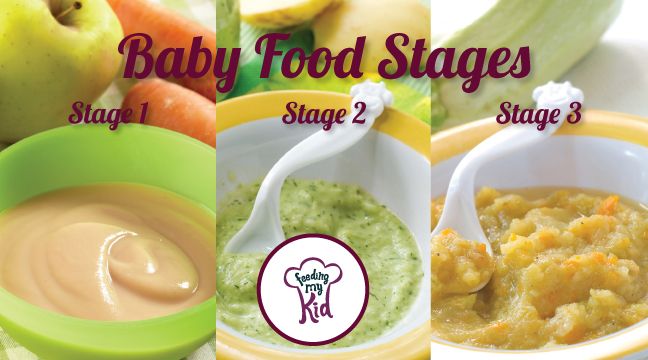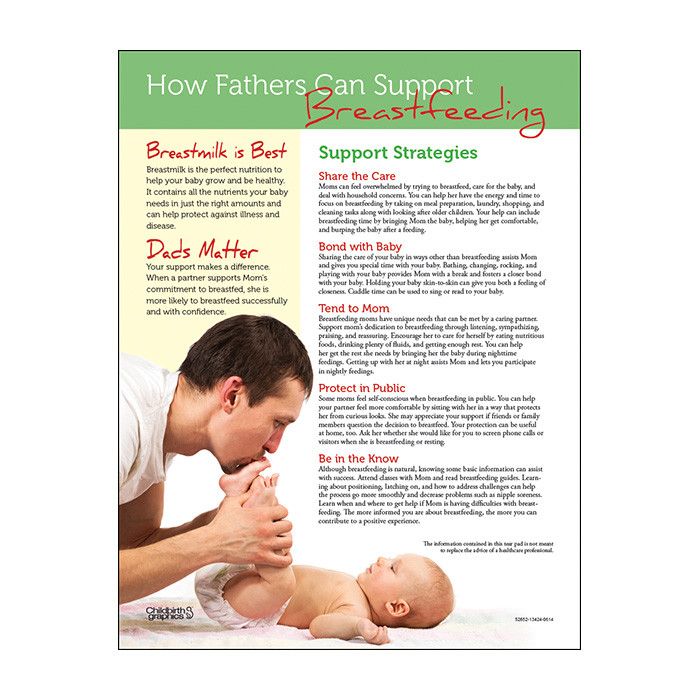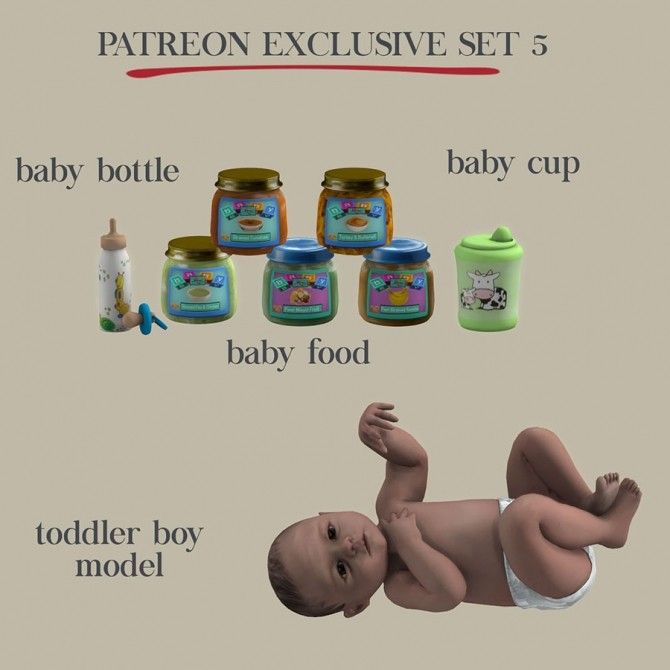Stage 3 baby food texture
30 easy stage 3 baby food recipes and how to know when they’re ready
If you are traditionally spoon weaning your baby, you will get to a point where your baby can easily manage thick purées, some finger foods and is even coping with soft lumps.
Now you need to turn up the textures a notch to provide more challenging foods which is the final step before your baby is joining in with normal family meals.
When does stage 3 weaning start?
It’s usually around 9-10 months or so, and is often a gradual process rather than a hard stop with stage 2 baby foods.
By 12 months, we want your baby to be eating the same meals as you and the rest of the family. 5
What are Stage 3 foods for babies?
Stage 3 foods include foods that have mixed textures such as chopped family meals.
Examples include beef bolognese with pasta shapes, chicken curry and rice, boiled eggs and toast soldiers or even a mini roast dinner.
It also means offering hard finger foods like raw apple slices or vegetable sticks like raw carrots and peppers and hard dry foods that splinter like crackers. 1 This may fill you with fear because these foods were always deemed a choking risk earlier on in weaning. However if your baby has molar teeth (the big ones at the back) they should be able to chew well enough to manage hard foods safely, and these foods are a texture your baby needs to learn to eat so that they aren’t picky as they get older.
What is the milk and food schedule at stage 3?
It is recommended that your baby should be having 3 meals per day with smaller milk feeds mid morning, mid afternoon and bedtime. The milk on waking will likely have stopped and they definitely don’t need milk through the night.7
Meals probably now consist of two courses, a savoury main course followed by a dessert.
But snacks aren’t needed yet, these come in after your little ones first birthday.
Why are stage 3 baby foods needed?
Stage 3 baby foods are the next level in terms of challenging textures and are needed for your baby’s development of their eating skills. If this miss this and stay on soft textures and purees too long, they will struggle to cope with family foods later on. 2
If this miss this and stay on soft textures and purees too long, they will struggle to cope with family foods later on. 2
They also need to learn how to move firmly textured food around their mouth in a circular action, chew it and swallow it successfully 3.
It’s also crucial at this stage that milk feeds decrease so that appetite is learned.
As milk feeds go down, nutrition must come from food which means that planning your baby’s meals becomes even more important.
Did you know that as the challenging textures progress babies work the muscles that are involved with the development of speech? 6
Your baby’s development at this stage
Your baby at this stage will likely be showing a clear interest in food by getting excited and pointing to things they like, and you will be able to recognise when they’re hungry and ready to eat.
Your baby will now be able to self feed, and they’ll be pretty good at not spilling food from the spoon, and they are super proficient at eating with their hands. Dipping will be a novelty so try breadsticks and hummus or a boiled egg and soldiers.
Dipping will be a novelty so try breadsticks and hummus or a boiled egg and soldiers.
They will even be able to pick up small food items like peas or sweetcorn.
They may start to indicate ‘no’ with a shake of their head or drop food over the side of the highchair when they’re done.
They will also be able to pick up a two handled lidded cup to drink from. 2
What is the difference between stage 2 and stage 3 baby food?
Stage 3 foods are no longer puréed or mashed. They are simply just chopped family foods and harder finger foods. Stage 2 foods include thick purées, mashed foods with lumps and softer finger foods.
If you’re not sure which stage your baby is at you can take a look at my blog post about Stage 2 weaning here.
Clues your baby is ready to start stage 3 foods
Moving on to stage 3 can be such a smooth process that it may have already happened and you didn’t even notice! There isn’t one big sign to watch out for so just spend a little bit of time watching your little one at feeding times.
If you are bottle feeding you may have noticed that these have reduced through the day and if you’re breastfeeding you might have noticed that your baby’s feeds are shorter.
If you watch your baby closely, you should see that they are chewing foods and are able to move the food around their mouth. This is a good sign that they’re capable of eating chopped and minced textures rather than purees and mashed foods.
Your baby will have mastered the pincer grip now which will help them be able to pick up smaller pieces of food between their thumb and forefinger. They may even have some teeth to help them manage crunchier textures.
What are stage 3 food examples for babies?
Below are examples of Stage 3 meals that are great for your little one!
-
Raw fruit and vegetable sticks, hummus and pitta
-
Scrambled egg and buttered toast triangles,
-
Mini tuna mayo sandwiches and cucumber sticks
-
Pasta shapes with a bolognese sauce
-
Breadsticks with bean dip
-
Mini burgers in mini buns
-
Chicken strips, homemade chips and peas
-
Boiled egg and soldiers
-
Chunky veg and lamb casserole with rice
Suitable desserts might be:
-
Chopped strawberries and full-fat plain yoghurt
-
Fresh fruit ice lolly
-
Tinned peaches in natural juice with custard
-
Rice pudding
-
Frozen banana ice cream
How important is nutrition now?
Nutrition is of great importance now, the needs of your baby are increasing and the majority of your baby’s nutrients will be coming from food instead of milk.
Milk hasn’t been nutritionally enough for a while now but at this stage milk should complement your baby’s diet rather than it be the other way round.
But milk is easier to drink than food is to eat and so your baby may prefer to have more milk than food. Some babies therefore don’t drop feeds by themselves and so as their parent we have to help them.
If you are formula feeding try and cut milk down to 350-400ml (12-13oz) maximum in a 24 hour period or offer full breastfeeds mid morning, mid afternoon and bedtime and resist in between.
Babies who have too much milk at this stage are more likely to develop nutritional deficiencies, the most common one being iron deficiency, I had first hand experience of this with my first baby who loved his boob!
Because nutrition is so important, here’s how to ensure they get a good variety. Meals should incorporate all 5 food groups. 5
-
Fruits and vegetables
-
Starchy foods like potatoes, bread, pasta, cereals and rice
-
Protein including beans, pulses, meat, fish, eggs and tofu
-
Dairy like full-fat yoghurt and cheese
-
Healthy fats and oils
What are good finger food ideas for stage 3 baby food?
At this stage, your baby should already be familiar with having softer finger foods like omelette, cooked pasta and soft vegetable fingers and buttered toast. 8
8
Offering firmer finger foods is a great way to expose them to challenging textures and as a bonus can help to relieve any teething pains by gnawing and chewing. 2
Wait until molar teeth appear before you offer very hard food like raw carrot, beef jerky or apple slices as these could pose a choking risk.
How to safely transition from stage 2 to stage 3 baby foods
It’s simple, just gradually start adding more challenging textures to your baby’s diet.
This means that your baby has some foods they are comfortable and familiar with and some that are new and a bit more difficult to eat.
This graded approach ensures safety and at the same time encourages the development of skills in a way that isn’t too frustrating or taxing for your baby.
You can imagine, if they are hungry and faced with food they can’t easily eat, they are going to get quite cross!
Although we’ve talked a lot about texture, exposure to lots of different flavours is still really important at this stage so be brave and include foods that are spicy, fragrant and flavoursome, and repeat these often.
Herbs and spices such as cinnamon, cumin, coriander, garlic, ginger and even black pepper make really tasty options and will enhance the sensory experience for your baby. Yes you can use chilli but go gentle with this one.
What stage 3 foods to introduce first
There’s no right or wrong order of which foods to introduce first. Have a look at the meals that you’re already serving in your home and see how these can be adapted to suit your little one.
At this stage it might be that the food may need a bit more chopping up and some ingredients (such as salt, sugar or chilli powder) reduced but most foods can be suitable with a little bit of creativity.
Foods to avoid during stage 3
There are some foods that should be avoided for your baby during weaning, these are listed and explained below:
Salt:
Salt should not be added to your baby’s food and naturally salty foods such as cheese, bacon and ham should be limited.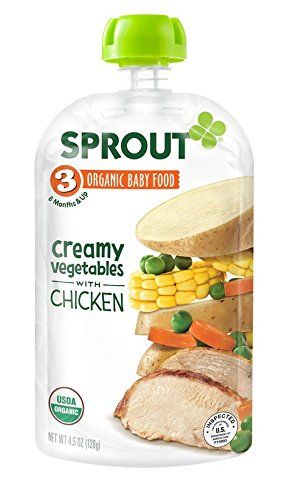
This is because their kidney function isn’t fully developed enough to process large amounts of salt. Babies under 1 years old should have less than 1g of salt.
Sugar:
This also shouldn’t be added to any food or drinks and sweet food like biscuits and cakes is best kept to a minimum till age 2 to prevent a preference for sweet foods developing.
Babies are born with a preference for sweet things to help them seek out the breast at birth.
If you need to sweeten foods (I understand, sometimes you just do), opt for fruits like bananas, or apples. 10
Raw/Lightly cooked shellfish:
Shellfish such as mussels, oysters and clams should not be given to babies as they can cause food poisoning. 11
Shark, swordfish, and marlin:
These fish have high amounts of mercury which can affect your baby’s nervous system and so it’s recommended they are avoided. 7
Whole nuts:
Whole nuts are a choking hazard for babies, choose nut butter or ground nuts so that your baby still benefits nutritionally. 12 Other foods like whole grapes, popcorn, cherry tomatoes and giant blueberries can also be a choking hazard and should be chopped into smaller sizes to make them safer.
12 Other foods like whole grapes, popcorn, cherry tomatoes and giant blueberries can also be a choking hazard and should be chopped into smaller sizes to make them safer.
Honey:
Honey should not be given to babies under 1 years old due to the possible presence of botulinum, a food poisoning bacteria. 7
Some Cheeses:
Mould ripened cheeses like brie, camembert, ripened goats milk cheese, and soft blue veined cheeses like Roquefort should be avoided and cheeses made from unpasteurised milk, again it’s because they may contain a type of bacteria that can cause food poisoning. 12
How to manage mealtimes at stage 3
It’s now more important than ever to sit and eat together as a family so that your baby can share the same meal experience as you. Experience is everything, this is how your little one learns their social skills and table manners.
At this stage it’s important not to provide ‘baby food’ as now is when babies need to learn to eat family food.
If you haven’t already, now is when the division of responsibility in feeding can be introduced fully. This outlines your role and your baby’s role in the feeding relationship.
-
Your role is to provide the nutritious food, to decide on where and when it will be served and then take a back seat.
-
Your baby’s role is to decide if to eat, how much and in what order. And importantly to decide on when they are finished. 9
What to do if food is rejected
If foods are refused, don’t make a big fuss. In fact I’d go as far as saying don’t even mention it.
And if they throw unwanted food on the floor, it’s quite alright to remind your baby what you want them to do instead, “food stays on the table” but keep any emotion out of your voice. Your baby will be looking for a response and if they get attention, they’ll likely do it again.
Sometimes certain flavours and textures can take a while to get used to. Just make sure that you offer those rejected foods as part of another meal on a different day so that your baby has the opportunity to learn and become familiar with them.
As they get older, they need more exposures to new food to learn to like them, so this can take time.
Should they self feed or should I spoon feed?
At this stage definitely avoid spoon feeding your baby and encourage them to get stuck in, feeding themselves and taking control of what foods to eat and in which order.
Give them cutlery but don’t insist they use it if they are doing a great job with their hands. Take a look at my blog all about encouraging your baby to self feed if they are reluctant.
30 Stage 3 baby food ideas
Here are some recipes perfect for Stage 3 weaning!
-
Butternut squash risotto
-
Mini shepherd’s pie
-
Baked corn on the cob
-
Chicken Tikka Masala
-
Fish lasagne
-
Carrot stars
-
Tuscan bean stew
-
Pea and sweetcorn egg muffins
-
Black bean spaghetti
-
Sole with squash, lemon and peas
-
Tuna and veg bake
-
Kale and feta frittata
-
Tofu veggie scramble
-
Beef casserole
-
Baby bircher
-
Quinoa Khichdi
-
Chicken noodle stew
-
Herb crackers
-
Aubergine and tomato bake
-
Sandwiches
-
Cheese and tomato couscous nuggets
-
Pasta with bean and tomato sauce
-
Chicken and bean chilli
-
Cheese and leek savoury bread and butter pudding
-
Spiced pork with plum
-
Spinach, cod and pea
-
Salmon risotto
-
Sunday roast
-
Omelette fingers
-
Cheese and mushroom cakes
If you would like a PDF version of this blog delivered directly to your inbox, pop your details below.
Sarah Almond Bushell MPhil, BSc (Hons) RD MBDA – Registered Dietitian & Children’s Nutritionist
When is a child ready to try thicker solids?
Your baby’s made it through cereal mush, soupy carrots and ever-so-slightly texturized chicken and squash dinners. Now it’s time for the real culinary fun to start — welcome to Stage 3 baby food!
“Once your baby has successfully eaten Stage 2 foods, which have some texture to them, they can start Stage 3,” says Dr. Melanie Custer, a pediatrician at West Bend Pediatrics, Children’s Wisconsin.
How do you know your baby is ready to make the leap from purees to slightly more sophisticated fare? Here, experts and parents weigh in on moving on to Stage 3 baby food. Time to dig in!
What is Stage 3 baby food?
Most jars of Stage 3 baby food are still pretty pureed (hence, the jars), but your little one needn’t be restricted solely to foods that are, for all intents and purposes, mush. Instead, you can steer your budding gourmand toward soft, small pieces of whatever you’re having. Think: cut-up pieces of turkey meatballs, banana chunks and small squares of tofu.
Think: cut-up pieces of turkey meatballs, banana chunks and small squares of tofu.
“Stage 3 baby foods are thick blended foods with chewable chunks, such as the kind you find at the grocery store, or small cut-up pieces of easily chewed table foods, which are usually referred to as ‘finger foods’,” says Dr. Kristen Treegoob, a pediatrician at Children’s Hospital of Philadelphia. (Avoid placing chunks of food in blends and purees, as it may cause a choking risk.)
“Stage 3 baby foods are thick blended foods with chewable chunks, such as the kind you find at the grocery store, or small cut-up pieces of easily chewed table foods, which are usually referred to as ‘finger foods.'”
DR. KRISTEN TREEGOOB, PEDIATRICIAN
And be sure to bear in mind that every child is different and develops at their own individual pace. Check with your child’s doctor for baby food recommendations during the first year.
When to start Stage 3 baby food
“Typically, 9 months is the age babies start eating Stage 3 foods,” says Dr. Zulma Laracuente, a pediatrician in Alexandria, Louisiana. “But, generally-speaking, 9 to 12 months is considered a time of slowly transitioning your baby to table food.” (In other words, no more cooking and serving separate meals!)
Zulma Laracuente, a pediatrician in Alexandria, Louisiana. “But, generally-speaking, 9 to 12 months is considered a time of slowly transitioning your baby to table food.” (In other words, no more cooking and serving separate meals!)
Does that mean you baby is ready to tuck into a T-bone steak with a side of broccoli rabe? No. At least, not in the traditional form. But as long as food is small and very easy for baby to work through, it’s OK.
While the idea of having your 10-month-old feed themselves while you sit down to your own meal probably sounds heavenly, bear in mind, every child gets there in their own time.
“My first child couldn’t wait to eat mashed up meatballs and soft carrots on his own,” says mom of two Jennifer Reilly of New York City. “But my second? Not so much. Aside from puffs, I was still spoon-feeding him at nearly a year!”
Signs baby is ready to start Stage 3 or finger food
As your baby’s oral skills and hand-eye coordination develop, they’re moving closer to being able to feed themselves, either with their hands or a spoon.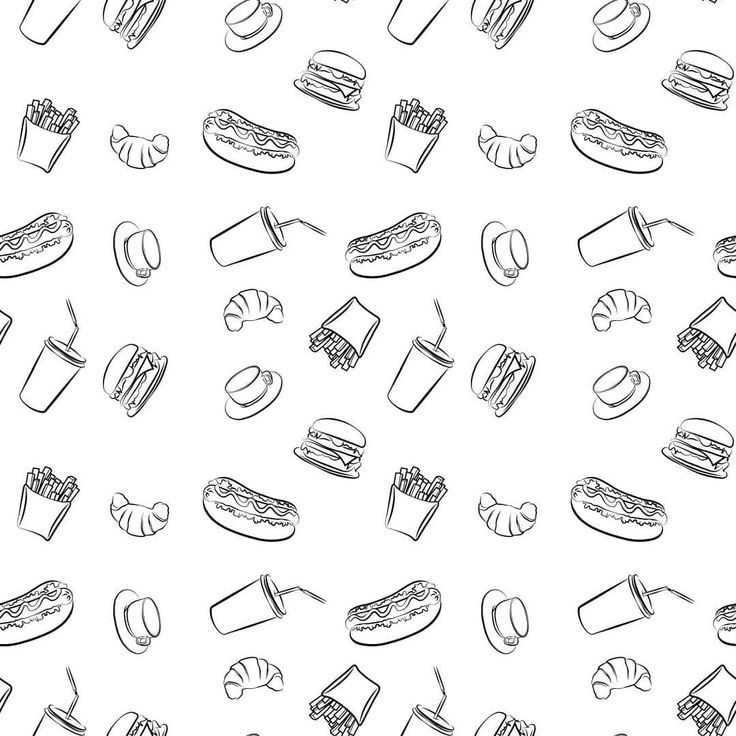 (Though, according to the Cleveland Clinic, babies usually don’t get the hang of utensils until at least 12 months.)
(Though, according to the Cleveland Clinic, babies usually don’t get the hang of utensils until at least 12 months.)
According to Jenifer Thompson, R.D., an advanced practice dietician at Johns Hopkins in Baltimore, babies can move past traditional baby foods and onto “pick-ups” (finger foods) as their pincer grasp skills are honed.
“By the time baby is between 8 to 12 months old, they should be able to pick up small, soft pieces of finger foods with their finger and thumb and bring them to their mouth,” she says.
Other signs your baby is ready to take meal time into their own hands? They tell you — as only a baby can.
“I knew my son was ready to try table foods when he started grabbing at the spoon every time I went to feed him,” says mom of two Darcy McConnell of Garwood, New Jersey. “Even though he didn’t actually use a fork or spoon for a few months, he loved holding on to them while he picked up his food. It was so cute!”
What Stage 3 foods to start with
Once you’ve hit the Stage 3 phase, (almost) anything goes, as long as it’s the right texture for baby.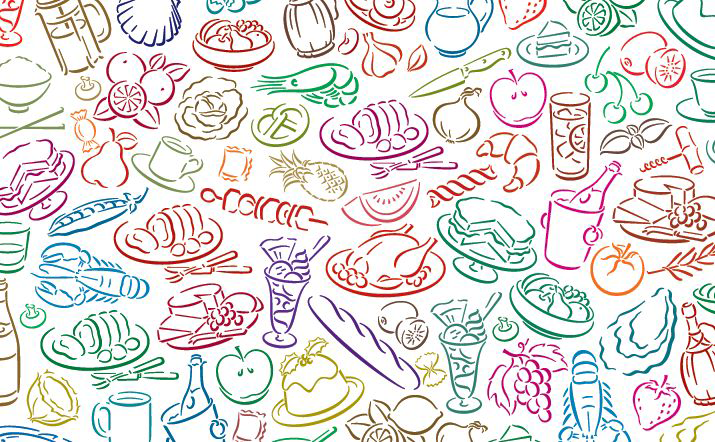 For instance, it’s OK to feed your child what the rest of the family is having for dinner, as long as you take proper precautions, such as making sure food is easy to chew and cut up into small pieces.
For instance, it’s OK to feed your child what the rest of the family is having for dinner, as long as you take proper precautions, such as making sure food is easy to chew and cut up into small pieces.
“Once babies are about 9 months old, they should safely be able to self-feed a variety of foods,” says Treegoob.
At this point in your baby’s life, solid food is starting to make up a significant part of their diet, so it’s important to offer foods that are nutritious. Also, exposing your child to different foods that are nourishing from an early age can help lay the groundwork for good, long-term habits.
“Parents should introduce a variety of healthy foods from different food groups with different textures by the end of the first year in order to help with healthy eating habits,” says Thompson.
“Parents should introduce a variety of healthy foods from different food groups with different textures by the end of the first year in order to help with healthy eating habits.
jenifer thompson, advanced practice dietician”
Here are a few good choices for Stage 3 foods, according to Thompson and Treegoob:
- Well-cooked vegetables of any variety.
- Ripe fruits of any variety. (Mashed or cut-up bananas work very well at this stage.)
- Shredded meat.
- Scrambled eggs.
- Soft cheese.
- Cooked pasta.
- Small pieces of tofu.
Which foods to avoid during Stage 3
When your baby starts eating what the rest of the family is having, by all means, rejoice over having to prepare fewer dishes. However, if you’re hitting up the drive-thru after soccer practice with your older kid, skip the Happy Meal for your baby, regardless of how you serve it.
“When it comes to feeding babies, I recommend avoiding heavily salted or sweetened foods, as well as fast food,” says Treegoob.
The reason doctors advise being mindful of baby’s salt intake? In addition to it possibly contributing to bad eating habits overall, a 2011 study published in the European Journal of Clinical Nutrition found that infants who consumed over 400 milligrams of sodium per day (the maximum UK recommendation for children up to age 12 months) were potentially at risk of “harming developing kidneys” and causing “high blood pressure in later life. ”
”
According to Treegoob, parents should also avoid any foods that may pose a choking risk to children, such as:
- Popcorn.
- Whole grapes.
- Whole peanuts.
- Raisins.
- Hot dogs.
- Hard candy.
- Seeds.
And finally, parents and caregivers should understand how long baby foods last and forgo giving a baby honey until after their 1st birthday, as it can cause a botulism infection.
How to start Stage 3 foods safely
As with Stage 1 and Stage 2 baby food, babies still should eat sitting upright with an adult nearby.
“Once an infant is ready for Stage 3 solids and is able to finger feed themselves, it’s still important to watch your baby eat, so you can help pace them and identify signs of choking early,” says Treegoob. “You can also offer them sips of formula, breast milk or a little water every few bites when they begin eating more than a few ounces at a time of Stage 3 foods to make sure they don’t eat too quickly. ”
”
“Once an infant is ready for Stage 3 solids and is able to finger feed themselves, it’s still important to watch your baby eat, so you can help pace them and identify signs of choking early.”
DR. KRISTEN TREEGOOB, PEDIATRICIAN
Also, be sure the food you’re giving your baby is prepared for their developmental stage. According to Kids Health, parents should slice food up into small pieces in addition to cooking it a little longer in order to make sure it’s very soft. (And, of course, check the temperature!)
Once your baby gets a taste of “real food,” don’t be surprised if their interest in formula or breast milk wanes.
“Between 7 to 9 months, parents may notice that their baby shows interest in smaller or less frequent bottles or breastfeeds,” says Treegoob. “As long as weight remains on track and the baby is staying hydrated, there’s no cause for concern.”
According to Treegoob, babies between 4 to 6 months old typically drink between 24 to 40 ounces of breast milk or formula per day; 24 to 32 ounces from 6 to 9 months; and by 9 to 12 months, when they’re eating more table foods, that volume can decrease to as low as 16 to 24 ounces.
The American Academy of Pediatrics recommends giving baby between 4 to 6 ounces of breast milk or formula four times a day, along with three meals a day and two small snacks. What you give your little one is up to you — just make sure it’s healthy and texturally appropriate for their age.
Baby food without secrets
Children's meat and vegetable canned food is a "lifesaver" for every mother who has started complementary foods for her baby. Moreover, ready-made canned baby food products annually gain an increasing number of supporters among pediatricians, primarily due to the guaranteed control of state epidemiological surveillance over their production. Bribes and the assurance of manufacturers that canned food is made from high-quality, environmentally friendly products grown, harvested, processed and packaged in compliance with all safety standards. Is food from jars as healthy as advertised in commercials? nine0004
Test participants:
1."Agusha" (vegetables and beef).2. "Grandma's basket" (beef and cauliflower) .3. "Gerber" (home-style beef with carrots).4. Nestle (vegetables with beef) and Semper (beef stew with vegetables).
The first part of consumer testing took place in the Igromania entertainment center, where parents of small children were invited. This part of the test was focused on their assessment of the appearance of the baby food packaging, its labeling and the organoleptic characteristics of the product (color, smell, taste). For the purity of the experiment, the participants were first offered the contents of the jars, and then the jars themselves to study the label. nine0005
According to young parents, 1st place was almost unanimously given to "Agusha". The texture of the product was rated as the best for children - neither runny nor thick. A six-month-old kid present at the tasting ate “Agusha” with pleasure, although he usually eats food from jars badly.
Olga: “More like vegetable stew with meat, not meat with vegetables. Meat purees are more pinkish, but here you can see from the color that there are mostly vegetables, and most of all - carrots. nine0005
Meat purees are more pinkish, but here you can see from the color that there are mostly vegetables, and most of all - carrots. nine0005
2nd place went to Gerber food.
Irina: “The texture is like after a blender at home. It smells of meat, meat fibers come across and rice is felt. The child really liked it! Great for older kids! The consistency is larger and the meat is in pieces. There are spices in the texture and taste - pepper is added.
3rd place for Semper.
Tatyana: “This food, which is intended for children from 10 months old, has a texture for very adult children! All ingredients are reviewed. Everything is very large, and a lot of pepper! For an adult, this is very tasty, but it seems to us that for a 10-month-old baby, such an amount of salt and pepper in the diet is not acceptable.” nine0005
4th place - "Grandma's basket".
Ulyana: “By smell, you immediately feel that it contains cauliflower. The child didn’t want to eat it just because of the smell!” Eugene: “I would understand the child if he refused it. The first was much tastier compared to the second. Almost no taste at all. The texture is more uniform compared to the first puree ("Agusha"). Grains of meat are felt more.
The first was much tastier compared to the second. Almost no taste at all. The texture is more uniform compared to the first puree ("Agusha"). Grains of meat are felt more.
5th place for Nestle.
Oksana: “Absolutely no smell and taste. Barely perceptible smell of meat. And the taste is like that of "Grandma's Basket". Natalia: “The grains of meat are visible, but the taste is not felt. Yes, puree is very similar to the second one, only one is denser in texture, and this one is more watery. The most "none" of all." nine0007 As usual, we carried out the second part of our test at the Tomsk Regional Veterinary Laboratory, whose specialists assessed the nutritional value of the product, as well as the compliance of the contents of baby food jars with the current food safety standards.
Details
Vegetable-based canned food with meat are prepared meals for baby food, which include vegetable components and meat, which in most imported, and in recent years, domestic canned vegetable and meat products is no more than 10-15%.nine0002 A product manufactured abroad and entering the Russian market must comply with the labeling requirements of national legislation, that is, have information on the label in Russian. A regulatory document that is not indicated on the product label may be indicated in the contract for its supply to Russia - this is a voluntary matter.
The first question related to safety standards arose already at the stage of studying the label. Only two jars out of five were marked with regulatory documents (TU), according to which the consumer can identify the product (“Agusha” and “Babushkino basket”). According to TU, one puree refers to a vegetable and meat product, the other to a meat and vegetable product, although they do not differ much in composition, since meat is listed second on the label after vegetables. But still, according to the classifier, the TU codes are different. nine0005
But other manufacturers of tested baby food did not indicate their regulatory documents, in accordance with which it is possible to identify the product, on the labels. Although it is for them that the consumer must determine whether the composition of the product, its name, purpose, guaranteed indicators of quality and safety, including the content of vitamins, amino acids and minerals, correspond to those indicated on the package.
Although it is for them that the consumer must determine whether the composition of the product, its name, purpose, guaranteed indicators of quality and safety, including the content of vitamins, amino acids and minerals, correspond to those indicated on the package.
Sterilization versus preservatives nine0056
The analysis of food safety carried out in the laboratory (heavy metals, nitrates, the presence of GMOs) did not reveal any deviations, as did the microbiology test in 2 selective samples. There are no complaints about these indicators for all 5 products, which was to be expected, because all samples are sterilized products. Sterilization takes place at a temperature of over 100 degrees, in particular, canned meat and vegetable products are sterilized at a temperature of 113 to 135 degrees for a certain time, which is set depending on the feedstock and production technology, the field of which in such a product all microorganisms and their spores are destroyed. This process is necessary due to the long shelf life of the product - 2 years. And since preservatives in the production of baby food are excluded, sterilization solves this problem. nine0005
This process is necessary due to the long shelf life of the product - 2 years. And since preservatives in the production of baby food are excluded, sterilization solves this problem. nine0005
Based on the fact that this is a baby food product, canned food should contain, for its intended purpose, a sufficient amount of proteins, amino acids, minerals with an optimal ratio of calcium, phosphorus, a sufficiently small amount of table salt, an optimal amount of fat in relation to proteins and a sufficient set of vitamins . This is a general requirement for infant formula for young children. The balance of the composition is achieved here due to the presence in the product of beef, leguminous crops, vegetable and butter oils, as well as starch for binding in order to avoid splitting canned food. nine0005
With long-term sterilization, all taste indicators of the product naturally decrease, starch and sugar are partially broken down, enzyme activity decreases, and some vitamins are destroyed. Also, as a result of prolonged sterilization, color, smell and taste may change. The most lively, fresh and nutritious canned food for children is one that has a shelf life of up to 1 year. If the period is longer (in all our samples it is 2 years), then such a product is focused more on saturation, and its vitamin and nutritional composition is very weak. nine0005
Also, as a result of prolonged sterilization, color, smell and taste may change. The most lively, fresh and nutritious canned food for children is one that has a shelf life of up to 1 year. If the period is longer (in all our samples it is 2 years), then such a product is focused more on saturation, and its vitamin and nutritional composition is very weak. nine0005
Details
Vitamins according to SanPinSanPin (sanitary norms and rules) regulates only a part of vitamins - these are B2 (riboflavin), B1 (thiamine), beta-carotene, PP, B3 (niacin). Vitamins A and C are not included in the list.
In accordance with the regulations, these vitamins do not have to be present in the product, moreover, vitamins are not allowed as an additional enrichment of the nutrition of young children. Vitamin balance should be achieved only through the components of the product. That is, in this case, it is young beef. And already to compensate for the amount of proteins, fats and carbohydrates, a composition is selected that optimizes the vitamin and mineral complex of the product. Speaking of vitamins, it should be noted that in natural products it is possible to detect them only in very small doses, and it is generally difficult to find them in processed and sterilized ones. nine0005
Speaking of vitamins, it should be noted that in natural products it is possible to detect them only in very small doses, and it is generally difficult to find them in processed and sterilized ones. nine0005
Nowhere on the labeling of our 5 samples is it indicated whether vitamins were added additionally. Nevertheless, we decided to check their presence in the puree. The direction of the search for vitamins was suggested by the composition of the product on the label, where, as a rule, carrot puree and cauliflower were listed first. Proceeding from this, a study on vitamins A and C was laid. Only vitamin A was found, which was present in all samples, and in “Agusha” it turned out to be the most. Vitamin C was not found in any of the submitted samples. nine0005
It is important to know that according to TU (technical specifications) a product is produced in cases where there is a need to deviate from GOST in technology, or to achieve the final result. According to SanPin, such a product will not cause any complaints, but the underestimation of consumer properties (taste, nutrition) is allowed in TU.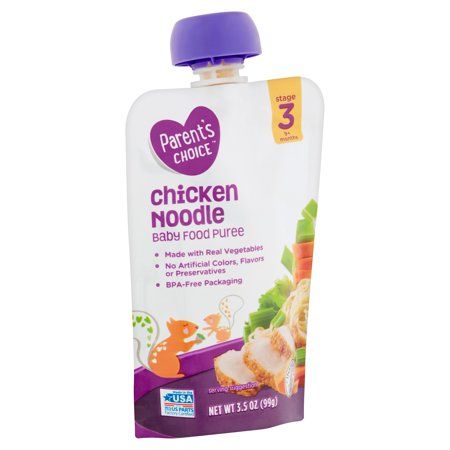 Therefore, if a product is produced according to specifications and at the same time, manufacturers declare on the packaging, for example, the huge benefits of its use for growth, brain development, immunity, and other things, the consumer should be interested in the reliability of this information. How does the manufacturer support such claims? In our case, not a single vitamin is indicated on the label. nine0005
Therefore, if a product is produced according to specifications and at the same time, manufacturers declare on the packaging, for example, the huge benefits of its use for growth, brain development, immunity, and other things, the consumer should be interested in the reliability of this information. How does the manufacturer support such claims? In our case, not a single vitamin is indicated on the label. nine0005
It turns out that some degree of growth, health improvement, etc. is achieved only due to the composition of the puree. For such indicators, the presence of at least calcium, phosphorus and vitamins in the diet is required. They may be there, but the data on the label absolutely does not imply and is not guaranteed exactly how much they are contained in the product. Thus, if the manufacturer writes about some favorable consequences for the body when using his products, then such information must be confirmed on the label. In our testing, the only thing that is guaranteed on all puree samples is that the product is non-GMO, free of dyes, flavors and preservatives, salt and gluten free. nine0005
nine0005
Label
The labels on food jars are quite informative, they indicate the manufacturer, expiration date. On the labels of imported samples there is a translation of information about the product in Russian.
In Russia, since February 2010, in Decree No. 982, certification of food products has been replaced by mandatory declaration. The mark of confirmation of conformity is obligatory, and it is applied on all jars submitted for the study! nine0005
In addition to mandatory declaration, baby food is also subject to mandatory state registration. Only 3 cans have a certificate of it (not on the label of "Agushi" and "Gerber"). This circumstance lowered their scores in the laboratory rating of the studied samples, since the certificate on the label is one of the indicators of confirming the safety of the product.
Lab Rating
In terms of nitrates (which are always found in vegetables and fruits) and vitamins, all the presented samples met the norms (see table), but, nevertheless, the highest nitrate indicator (albeit within acceptable limits) is in Agusha. Agusha has similarly high levels of vitamin A.
Agusha has similarly high levels of vitamin A.
If we build a rating of children's purees participating in testing, then 1st place is given to "Grandmother's basket" , where all the necessary parameters are indicated on the label: GOST, certificate of state registration of baby food, composition, presence of a vitamin-mineral complex, terms validity.
2nd place for Agushi. And if in consumer testing this puree took the 1st place, then in the laboratory it was not assigned leadership due to the lack of information on the state registration of baby food on the label. nine0005
It turns out that the product has not passed the state registration in the bodies of Rospotrebnadzor. It is likely that there is a registration, but it is not acceptable not to indicate such information on the label, especially when it comes to baby food. This is a violation. After all, the consumer must first of all receive all the data about the product from the label.
The rest of the samples in laboratory testing occupy the same positions, there is no clear distinction in places, all food is approximately the same in quality. nine0005
nine0005
The main rule when choosing baby food is to pay attention to the composition of the product. It's enough. If vegetables are in the first place in the composition of the product, it is vegetable-meat puree, if meat, then it is meat-vegetable.
We express our gratitude for the active participation in the preparation of the material to the specialists of the OGU "Tomsk Regional Veterinary Laboratory", as well as the entertainment center "Igromaniya" for their assistance in organizing consumer testing.
Homemade baby food recipes for 1-3 years old
person Posted By: Alexander Puzankevich On: comment Comment: 0 favorite Hit: 312
Homemade baby food tastes better and gives you the confidence to know exactly what your baby is eating. It also gives you the freedom and flexibility to change the combinations and textures of your child's food to suit their needs. nine0005
nine0005
Homemade baby food may seem like an impossible task, especially for a new mom, but it's not as hard as you think and definitely worth the effort.
Homemade baby food tastes better and gives you the confidence to know exactly what your baby is eating. It also gives you the freedom and flexibility to change the combinations and textures of your child's food to suit their needs.
First stage baby food: what is it and when should I start? nine0005
The first stage is the first food your baby will be introduced to from about 6 months of age. In the past, some doctors have recommended starting your baby on solid foods as early as 4 months of age, but the American Academy of Pediatrics recommends waiting until at least 6 months of age before introducing anything other than formula or breast milk to your baby. .
Baby food should have a thin, smooth texture in the first stage because your baby may still have a strong tongue thrust reflex. The food at this stage should not have much texture because otherwise your child may experience suppression or vomiting. nine0005
nine0005
At this stage you also want to use mostly single ingredient meals and you will need to introduce one food at a time and wait a few days before introducing a new food to make sure your child does not react to that particular food.
Step 1 Baby Food Recipes
For this step, you will need a blender, food processor, Baby Bullet, or hand blender.
Also, anything but bananas and avocados you will need to cook before mixing, but make sure you don't use oil or butter in the cooking process because fat and dairy are hard for kids to digest at this young age. To cook vegetables and fruits, they can be steamed, boiled or baked in the oven. nine0005
To steam fruits and vegetables, you can use a skillet with a steam insert or pour a small amount of water into the bottom of the pot, cover, bring to a boil and cook until the vegetables are very soft (Note: make sure make sure you use enough water so that it doesn't boil away before the vegetables are cooked - about half an inch to an inch of water in the bottom of the pan).
To roast fruits and vegetables, set the oven to 400 degrees, arrange the fruits or vegetables in a single layer on a baking sheet and roast until tender - the roasting time will depend on what you are cooking. nine0005
When fruits and vegetables are ready, add them to a blender, food processor or baby bullet, add a little water and mix.
After mixing until smooth, check the consistency. If the food is still too thick, add more water until the fruit or vegetable is a smooth, runny consistency.
Second stage Baby food: what to introduce now and when to introduce?
The second stage of baby food is when you start adding more texture and combinations to your baby's diet. This stage usually begins between 7 and 8 months of age. nine0005
Instead of mixing your child's food until it's thin and smooth, you can leave a little more texture in his or her food in the second step. You can also start creating delicious combinations with the products already featured. However, with new foods, you need to keep introducing them every few days to keep looking for a reaction.
However, with new foods, you need to keep introducing them every few days to keep looking for a reaction.
At this point, you can also start introducing allergy risk foods such as eggs, nut butter (yes, nut butter, including peanut butter - I explain why here) and fish. This is also a great time to add yogurt and some cheeses (like cheddar or parmesan) to your child's diet. nine0005
Homemade Baby Food Step 2
Oatmeal and Peanut Butter
Ingredients
1/2 c. Old fashioned oats
1 c. water
1-2 T. Peanut butter
1/4 T. Cinnamon (optional)
How to cook?
Bring water to a boil, add oats and reduce heat to medium. Cook until the water is absorbed and the oats are soft. Add peanut butter and cinnamon. Let cool and serve. nine0005
Yogurt and apples with cinnamon
Ingredients
1/2 c. Yoghurt
1 apple
1T. Butter
1/4 ton Cinnamon (optional)
How to cook?
Peel the apple and cut it into small pieces. Add the apple and oil to the pan and sauté until the apple is very soft. Add cinnamon and stir until smooth.
Add the apple and oil to the pan and sauté until the apple is very soft. Add cinnamon and stir until smooth.
Let the apple cool and then cut it into small pieces with a fork or potato masher. Mix apple with plain yogurt and serve. nine0005
Third stage Baby food: what to feed a child who is becoming more independent?
The third stage of baby food is teaching your child independence in eating (and snacking). At this stage, you will be feeding your child food that he can feed himself. This includes thicker food that he or she can eat with utensils and food that he or she can eat with his or her hands.
Some great and nutritious snacks are soft vegetables, soft fruits, pasta, scrambled eggs and cheese. When choosing snacks, avoid choking foods such as hot dogs, hard raw vegetables such as carrots and celery, whole grapes, whole nuts and seeds, and hard candies. nine0005
Homemade baby food recipe for step 3
Parmesan pasta with peas
Ingredients
1/4 p.